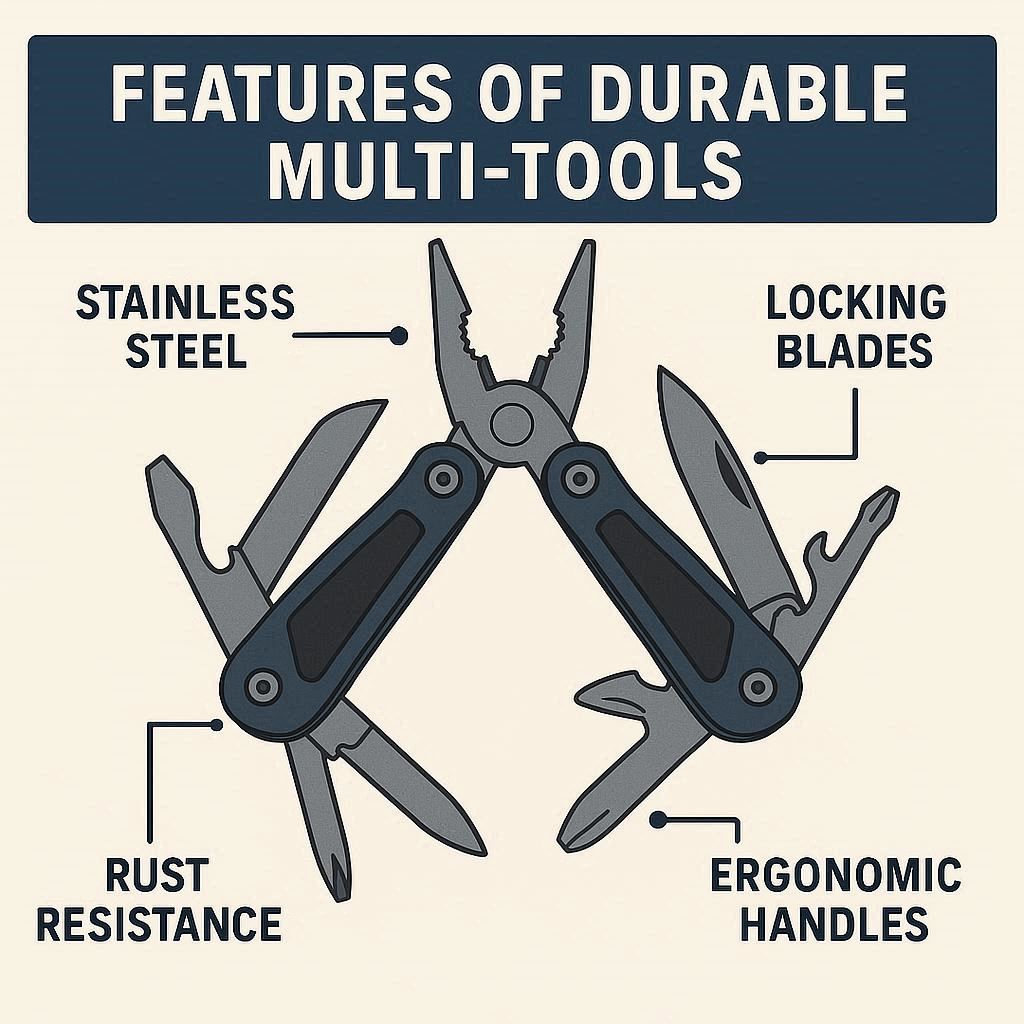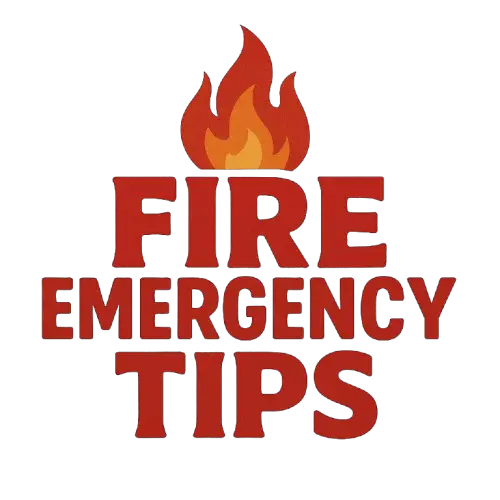
Firefighters rely on tools that perform under stress, in heat, in water, and when seconds matter. A durable multi-tool designed for firefighting work isn’t a novelty — it’s a mission-critical piece of kit. Below is a practical, field-tested breakdown of the essential features every firefighter should look for when choosing a multi-tool, with explanations of why each matter and how they affect performance, longevity, and safety.
1. Purpose-Driven Toolset (Right Tools for the Job)
A firefighter’s multi-tool must include functions that match common operational needs:
- Pry/Lever arm — for opening doors, lifting trim, and small forcible entry tasks.
- Hammer/Striking surface — to break glass, drive tools, or tap components.
- Cutting blade(s) — both straight and serrated blades for ropes, webbing, and soft materials.
- Bolt cutters / wire cutters — for cutting locks, bolts, or metal fasteners when possible.
- Seatbelt cutter / safety hook — quick, one-handed rescue of trapped occupants.
- Glass breaker / punch — to shatter tempered glass safely and reliably.
- Screwdrivers (flat & Phillips) and nut drivers — for quick mechanical fixes under pressure.
- Awl / reamer — useful for making holes in stubborn fabrics or leather.
- Saw / wire saw — for light wood or composite cutting during rescue.
- Pliers (needle-nose + regular) — gripping, twisting, and pulling tasks.
Why it matters: firefighting scenarios are unpredictable. A multi-tool should reduce the need to carry multiple single-purpose items, but still provide quality performance for each function — not just gimmicks.
2. Materials & Corrosion Resistance
Materials determine strength, weight, and resistance to the harsh environments firefighters face.
- High-grade stainless steel (e.g., 420, 440 series) is common for corrosion resistance and toughness.
- Tool steel (hardened and heat-treated) for cutting edges — provides superior edge retention but needs rust protection.
- Titanium components are lightweight and corrosion-proof; excellent for frames or handles but pricier.
- Coatings: PVD, DLC, or salt-spray-resistant finishes reduce corrosion and glare.
Why it matters: firefighting exposes tools to moisture, salt (coastal regions), heat, and chemical residues. Rust or metal degradation compromises the tool’s reliability and safety.
3. Robust Locking Mechanisms & Safety
Locking must be positive, secure, and tolerant of debris.
- Liner locks and frame locks are popular in folding multi-tools; for high-stress use, robust frame locks are preferred.
- Lock release design should be operable with gloved hands and under wet conditions.
- Secondary safety catch or positive lock indication is a plus to avoid accidental closure while cutting or prying.
Why it matters: closing under load is a major cause of blade injuries. In rescue contexts, a secure lock prevents catastrophic failure.
4. Ergonomics & Glove Compatibility
Firefighters commonly operate in heavy gloves and awkward positions.
- Grip design should be non-slip, contoured, and accommodate gloved fingers.
- Handle length and width must balance leverage and portability.
- One-hand opening for critical functions (like seatbelt cutters or blade deployment) speeds rescue.
- Low snag profile — avoid protrusions that catch on gear, webbing, or PPE.
Why it matters: small design choices that favor dexterity with gloves save seconds and reduce fatigue during prolonged operations.
5. Thermal & Heat Resistance
Tools used near fires must withstand high temperatures and thermal shock.
- Handles and inlays should be made from heat-resistant polymers or metals (avoid low-temp plastics that melt).
- Tempered metal construction retains strength at elevated temperatures.
- Heat-tolerant finishes prevent blistering or flaking when exposed to radiant heat.
Why it matters: tools are often laid down close to heat sources. A tool that deforms or loses temper can fail when you need it most.
6. Mechanical Strength & Leverage
Thickness, pivot design, and overall geometry dictate mechanical advantage.
- Beefy pivot pins (bolted or torx) reduce wobble and increase longevity.
- Thicker stock on critical components (pry bars, hammers, pliers) prevents bending.
- Lever geometry should maximize force transfer without increasing user strain.
Why it matters: forcible entry and prying generate high torque. Thin or poorly engineered tools will bend or break, potentially injuring the user.
7. Cutting Performance & Edge Retention
Cutting tools must bite and stay sharp:
- High-quality knives with full tang construction and proper tempering.
- Serrated edges for fibrous materials; plain edges for clean cuts.
- Replaceable blades or field-sharpenable profiles are preferred for maintenance in the field.
Why it matters: dull blades slow rescues and increase the force required, which raises the risk of accidents.
8. Waterproofing & Debris Tolerance
Functionality after exposure to water, mud, and soot is essential.
- Sealed pivots or drainage features reduce gumming from sand or ash.
- Minimal crevices where debris can collect; smooth transitions and reinforced housings.
- Non-corrosive fasteners (stainless or coated) avoid seizure.
Why it matters: a seized or gritty tool is functionally useless during rescue.
9. Modularity & Replaceability
Field repairs and part replacement extend tool life.
- Interchangeable cutter inserts, replaceable blades, or modular attachments increase value.
- Available spare parts (screws, springs, blades) ensure longevity.
- Standardized fasteners let departments maintain multiple units easily.
Why it matters: replacing a single worn component is cheaper and faster than replacing the whole tool.
10. Carry, Mounting & Accessibility
Quick access is as important as tool capability.
- Sheaths or holsters that mount on turnout gear belts or webbing (MOLLE compatibility).
- Retention systems that prevent loss during high-movement tasks.
- Low profile clips for pocket or chest mounting without snag risk.
Why it matters: a tool that’s hard to reach or that rattles off a coat pocket is a liability.
11. Weight & Portability Balance
Tools must be durable without being unnecessarily heavy.
- Optimize for mission: a truck company tool can be heavier; an individual’s personal tool should be lighter.
- Lightweight alloys and smart geometry cut weight without losing strength.
Why it matters: firefighters already carry heavy PPE and SCBA; every ounce counts for endurance and mobility.
12. Maintenance & Cleaning Ease
Tools should be simple to decontaminate after exposures.
- Smooth surfaces and disassemblable designs make washing easier.
- Materials compatible with disinfectants and decon solutions.
- Clear manufacturer maintenance instructions and accessible parts.
Why it matters: cross-contamination is a real concern; tools should survive regular cleaning cycles.
13. Compliance & Certification
While there isn’t a single universal certification for “firefighter multi-tools,” look for:
- ISO/ASTM material specs for steel grades.
- Manufacturer testing results for load, impact, and corrosion resistance.
- Departmental approvals and field endorsements from other fire services.
Why it matters: documented testing and peer acceptance provide confidence in performance claims.
14. Cost vs. Value
Cheaper multi-tools can be tempting, but for firefighters:
- Invest in proven platforms with good warranties and parts availability.
- Consider lifecycle cost (maintenance, spares, replacements) rather than just purchase price.
Why it matters: a $50 tool that fails in the first year can cost far more in operational risk than a $150 tool that lasts a decade.
Quick Buyer’s Checklist
- Durable stainless or tool steel, heat-resistant finish
- Secure, gloved-friendly locking mechanism
- Dedicated seatbelt cutter and glass breaker
- Pliers, reliable blade, and pry capability
- Replaceable blades/parts and sealed pivots
- Carry system compatible with turnout gear
- Manufacturer testing or department recommendation
FAQs
Q: Should a firefighter choose a folding or fixed multi-tool?
A: Both have pros. Folding tools are compact and safer for carry; fixed partial-tools (like a small pry bar + knife combo) offer simpler mechanics and often greater strength. For personal EDC on the rig, a high-quality folding multi-tool with strong locks is a practical compromise.
Q: Is a knife with a partially serrated edge better for rescue?
A: Yes — serrations cut fibrous materials like seatbelts quickly, while a plain edge is better for clean slicing. A combo blade or dual blades covers both needs.
Q: How often should tools be serviced?
A: Inspect after each call. Lubricate pivots monthly if used often, sharpen blades as needed, and replace any worn safety critical parts immediately.
Q: Can department-issued tools be customized?
A: Many departments opt for standardized models for training and spare parts, but common customizations include paracord wraps, engraved IDs, or department holsters.
Final thought
A durable firefighter multi-tool is more than metal and screws — it’s an extension of the firefighter’s hands and judgment. Prioritize function, reliability, and maintainability, and you’ll have a tool that helps save time, reduces risk, and lasts through the long haul.
